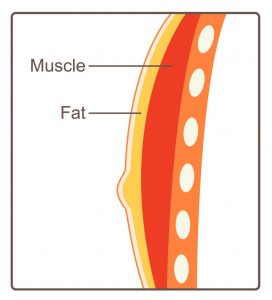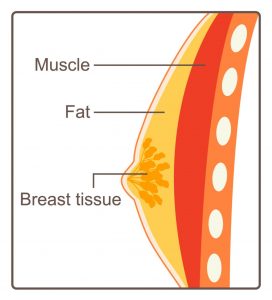
Gynecomastia is swelling of the breast gland tissue in boys or men, caused by an imbalance of the hormones estrogen and testosterone. Gynecomastia is benign, or not cancerous.
Gynecomastia can affect one or both breasts, sometimes unevenly. Newborns, boys going through puberty and older men may develop gynecomastia as a result of normal changes in hormone levels, though other causes also exist.
An accumulation of excess fat can occur in men who are overweight, but this is not gynecomastia, which is specific to breast gland tissue.
Gynecomastia may go away on its own. If symptoms persist, medication or surgery may help.
Causes
Gynecomastia is triggered by a decrease in the amount of the hormone testosterone compared with estrogen. Causes are generally due to normal hormone changes in your body, medication or disease.
An imbalance in the hormones testosterone and estrogen can lead to gynecomastia. Most people think of estrogen as an exclusively female hormone, but men also produce estrogen – though normally in small quantities. However, male estrogen levels that are too high or are out of balance with testosterone levels can encourage breast tissue growth.


Several things can upset the hormone balance, including the following:
During infancy, male babies can develop gynecomastia due to excess estrogen being transferred from their mothers. This condition will resolve itself soon after birth.
Gynecomastia caused by hormone changes during puberty is relatively common. In most cases, the swollen breast tissue will go away without treatment within six months to two years.
The prevalence of gynecomastia peaks again between the ages of 50 and 69. At least one in four men in this age group are affected.
Certain drugs, such as heart medications, anabolic steroids, marijuana and alcohol, can upset the hormone balance and lead to gynecomastia. Talk to your healthcare provider before discontinuing any medication.
Rarely, other disease or conditions may affect hormone levels and cause gynecomastia. Some examples include: genetic conditions; chronic diseases, especially kidney and liver disease; and tumors in the testes or adrenal glands.
Symptoms
Gynecomastia usually appears as a rubbery or firm mass of tissue, starting beneath the nipple and spreading outward. Both breasts are generally affected, but not always in the same way, and some patients experience symptoms in only one breast.
- Contact your healthcare provider if you experience:
- Swollen breast gland tissue
- Pain
- Breast tenderness
- Nipple discharge in one or both breasts
Gynecomastia is very common − affecting more than half of healthy males during puberty and about one-third of older men. Despite this prevalence, gynecomastia can cause embarrassment and anxiety − resulting in stress about daily activities and seeking treatment.
Diagnosis & Testing
Gynecomastia will first be evaluated through a physical exam, including breast tissue, abdomen and genitalia, and medical history questions from your healthcare provider.
Additional testing may be needed to determine the cause of the your gynecomastia. Tests may include:
- Blood tests to evaluate hormone levels, look for cancer markers and check for abnormal organ function
- Imaging, including mammogram, ultrasound or MRI
- Biopsy to test a tissue sample of any abnormal lumps
Treatment
There are three main ways to treat gynecomastia: observation, medication and surgery. Treatments depends on a number of factors, and your healthcare provider will discuss with you the best options for you.
- Observation − Most cases of gynecomastia will resolve on their own given time. Careful monitoring of symptoms is appropriate for many patients.
- Medication − The goal of treating gynecomastia with medication is returning the ratio of estrogen to testosterone back to normal.
- Surgery − If a case of gynecomastia is not going away on its own or responding to medication, surgery may be an option. Surgical treatment involves removal of excess breast tissue.
Navigating a health concern can be daunting. With the help of our women’s health navigator, you don’t have to do it alone. Your nurse navigator will be by your side every step of the way, providing support, education and guidance through each part of your journey.
